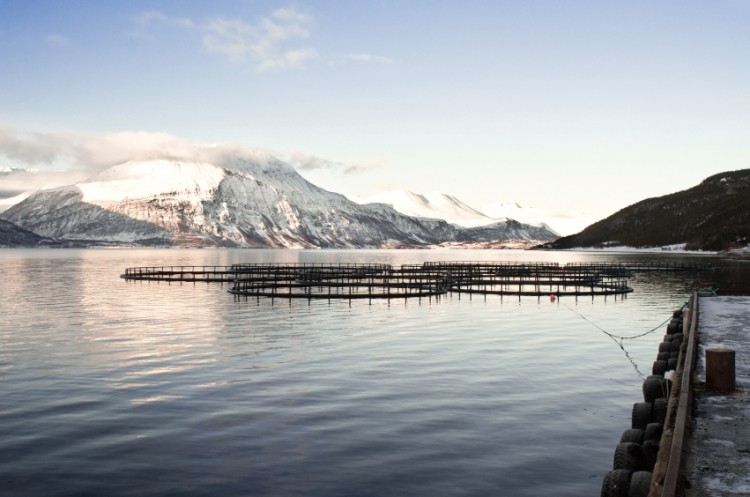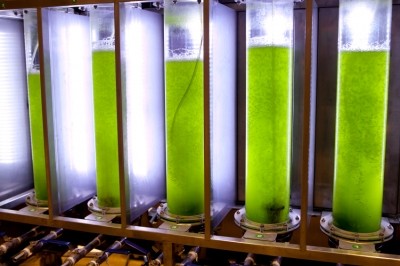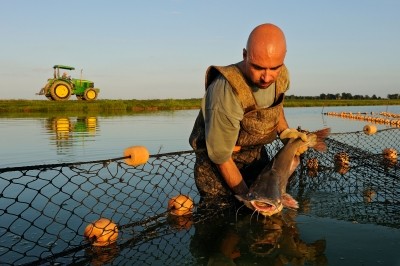US team weighing up algae strains for use in feed and fuel production

Interest in using microalgae as feed for food-producing animals has been one track of investigation during recent exploration of their use in biofuel production said principal investigator with the MAGIC consortium, Mark Huntley. The group also recently completed a large-scale fishmeal replacement trial with salmon in Norway.
Scientists believe there could be up to 800,000 different species of algae, each with different characteristics and nutrient profiles. Some are grown photosynthetically while others are grown under controlled system fermentations.
Huntley said the researchers have carried out swine and poultry trials using defatted algae biomass as a substitute for corn or soymeal, finding it can provide additional fatty acids and higher iron for swine diets, he said.
“By adding in omega 3 and omega 6 that come from the algae, the content of the broiler meat was improved,” he said. And, in addition, it turns out that in some other trials, the algae meal provides a rich source of iron that effectively negates anemia in swine diets.”
What’s been published by MAGIC so far has been a proof of concept of an integrated process regarding the creation of products from algae, said Huntley. “We showed that we could make animal feed and some fuel, but now we’re going to refine those products,” he added.
MAGIC is also starting to evaluate several other strains of algae that are known to be “excellent performers” in terms of growth rate and harvest production, he said.
He said that using algae meal may be a more sustainable option than continuing to produce fishmeal or fish oil from harvested fish.
And the algae meal does not trigger some of the same negative effects, like fish diarrhea, that the use of vegetable meal derived alternatives can produce, said Huntley.
Industrial scale production
He said recently published additional research by the consortium includes a study looking at the economic viability of producing algae on the industrial scale.
The work focused on the sustained production of two forms of marine microalgae – Staurosira and Desmodesmus, researchers said. The two strains were selected after evaluation of more than 500 varieties.
The algae were grown in test ponds as a demonstration, with results applied to the perspective performance of a 100 hectare facility, researchers said.
“Nitrogen fertilization of 2-d batch cultures in open ponds led to the greatest yields – from both species – of ~ 75 MT ha− 1 yr− 1 biomass, and ~ 30 MT ha− 1 yr− 1 lipid, which are unprecedented in large scale open pond systems,” they said.
The process employed used seawater and didn’t discharge nitrogen or phosphorus, they said.
However, the cost of building such a farm would be about $67m in Hawaii or $59m off the Texas Gulf coast, they said.
Earlier research
In research published in the Journal of Animal Science in 2014, Cornell University based scientists, part of the MAGIC consortium, reported benefits for the use of microalgae biomass in the feed of broilers, layers, and weanling pigs.
The researchers used four types of full-fat and defatted microalgal biomass (Staurosira spp.) from the biofuel production research of Hawaii-based Cellana. The biomass contained between 14 and 38% crude protein, and between 1.5% and 9.3% crude fat, they noted.
The results showed that, based on growth performance, egg production and quality, biochemical indicators, and/or fecal samples, weanling pigs, broiler chicks, and laying hens were able to tolerate the incorporation of microalgal biomass into their diets at a level of 7.5%.
Source: Journal of Animal Science
2014, Volume 92, Pages 1306-1314, doi:10.2527/jas.2013-7250
“Potential of defatted microalgae from the biofuel industry as an ingredient to replace corn and soybean meal in swine and poultry diets”
Authors: S. Gatrell, K. Lum, J. Kim, X. G. Lei








